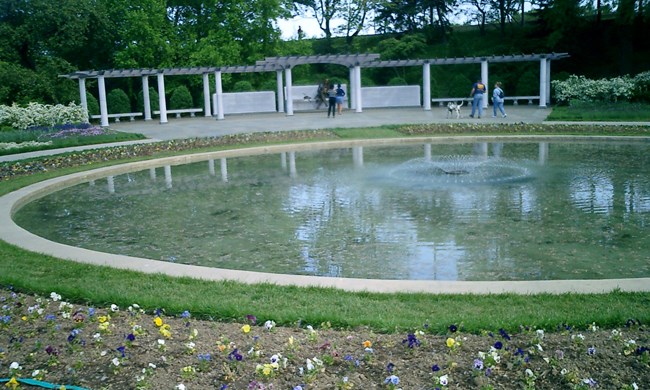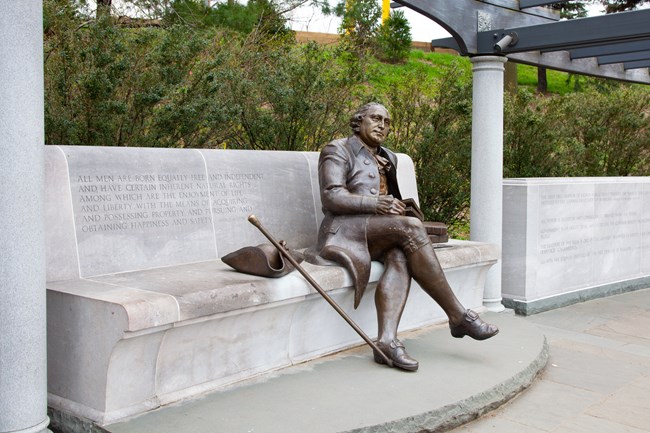Last updated: December 23, 2022
Article
NAMA Notebook December: Bill of Rights

NPS
by Ranger Jen
Just last month, I was talking to a local teacher who suggested a professional development session on lesser-known memorials around the National Mall. It is always a treat when we can share stories with visitors that they may not be very familiar with. NAMA Notebook seems like a good place to introduce some of the sites that may not be as well known in the park and how those sites can be incorporated into curriculum.
In honor of Bill of Rights Day on December 15, let’s start with the George Mason Memorial. Mason may not be as well known today as some of his contemporaries like George Washington and Thomas Jefferson, but his ideas have had a lasting legacy on the United States government.
When we take students to the George Mason Memorial, located between the Thomas Jefferson Memorial and the Potomac River, almost underneath the 14th Street Bridge, we point out a quote there. We ask if these words sound familiar.

NPS
You might ask your students if they recognize these words. Often students are reminded of the Declaration of Independence. Jefferson borrowed ideas from Mason, who wrote the Virginia Declaration of Rights. The documents are similar and might be an interesting activity to compare and contrast. It also might surprise students how obviously Jefferson took from Mason’s words.
Mason was a neighbor of George Washington’s. He lived at Gunston Hall on the Potomac River. He preferred to stay closer to home, working more in local politics. He was persuaded to join the Constitutional Convention in Philadelphia, where he spoke strongly for including a Bill of Rights in the Constitution, so strongly that he refused to sign when the document was originally ratified without one. He claimed he would “sooner chop off his right hand than put it to the Constitution as it now stands.”
Rangers at the National Mall offer a program about the Constitutional Convention at the Mason Memorial. Using primary sources from members of the Convention, students read a short excerpt from a member and determine what issue was most important to that member. They then share with the group about their historical figure and see how their person may have agreed or disagreed with others. Ultimately, the lesson reinforces the importance of compromise in making government work. We have also modified this for a virtual program.
Additional Resources
Ranger Bethany joined Lacey at Gunston Hall for this conversation
10 things to know about George Mason and the Bill of Rights.
Ranger Jen visited with Mary from the Bill of Rights Institute in honor of the Lincoln Memorial’s 100th anniversary.
Preservation and Perseverance: The Lincoln Memorial & Our Constitutional System
The National Mall has many Constitution stories that can be explored, such as:
- Lincoln’s handling of the Civil War as a Constitutional crisis
- Washington as leader of the Constitutional Convention
- FDR’s interpretation of the Constitution
- National Mall and Memorial Parks as a site for First Amendment demonstrations.
How could you use the National Mall in your lessons about the Constitution? Email us with your good ideas or to schedule a program.
